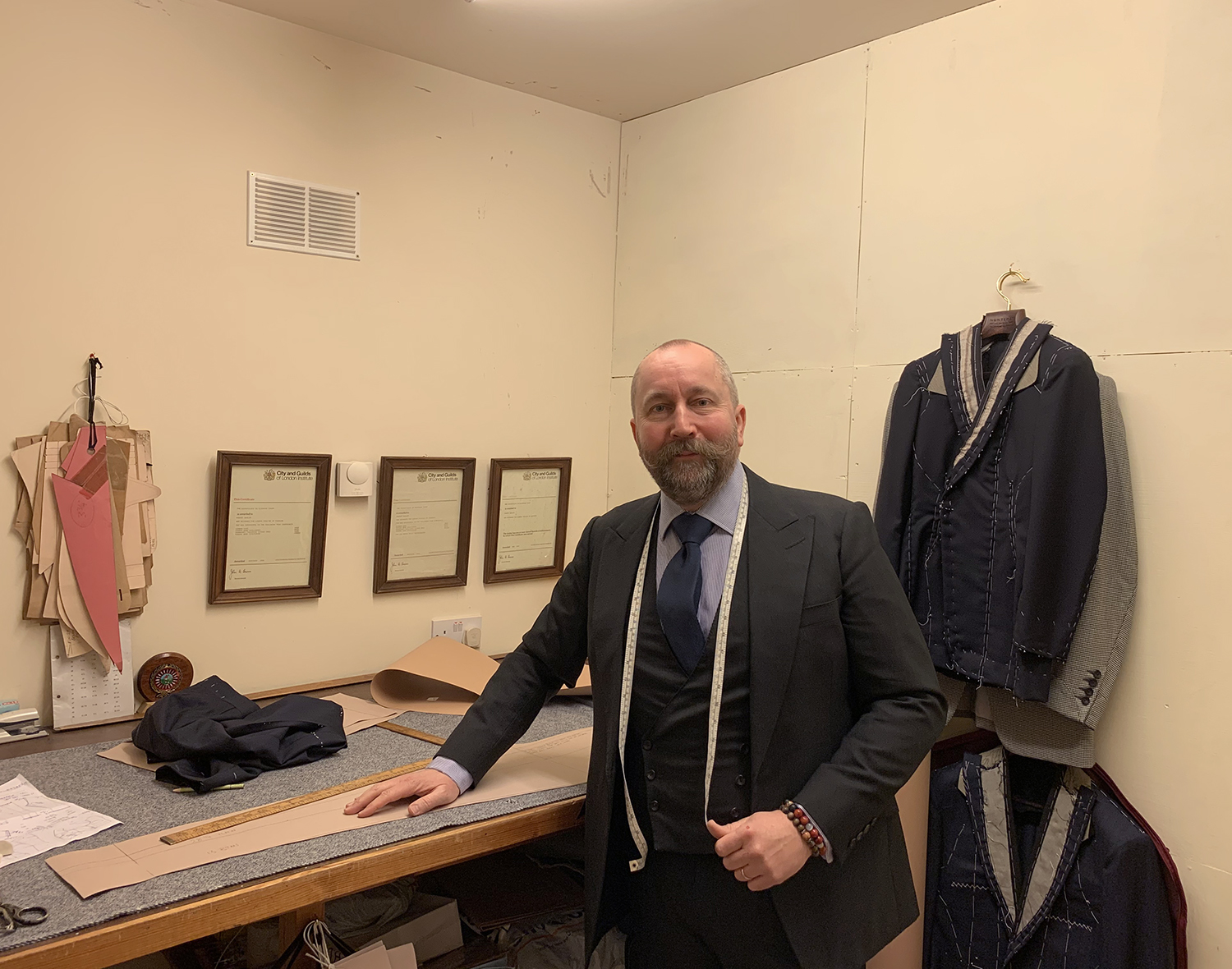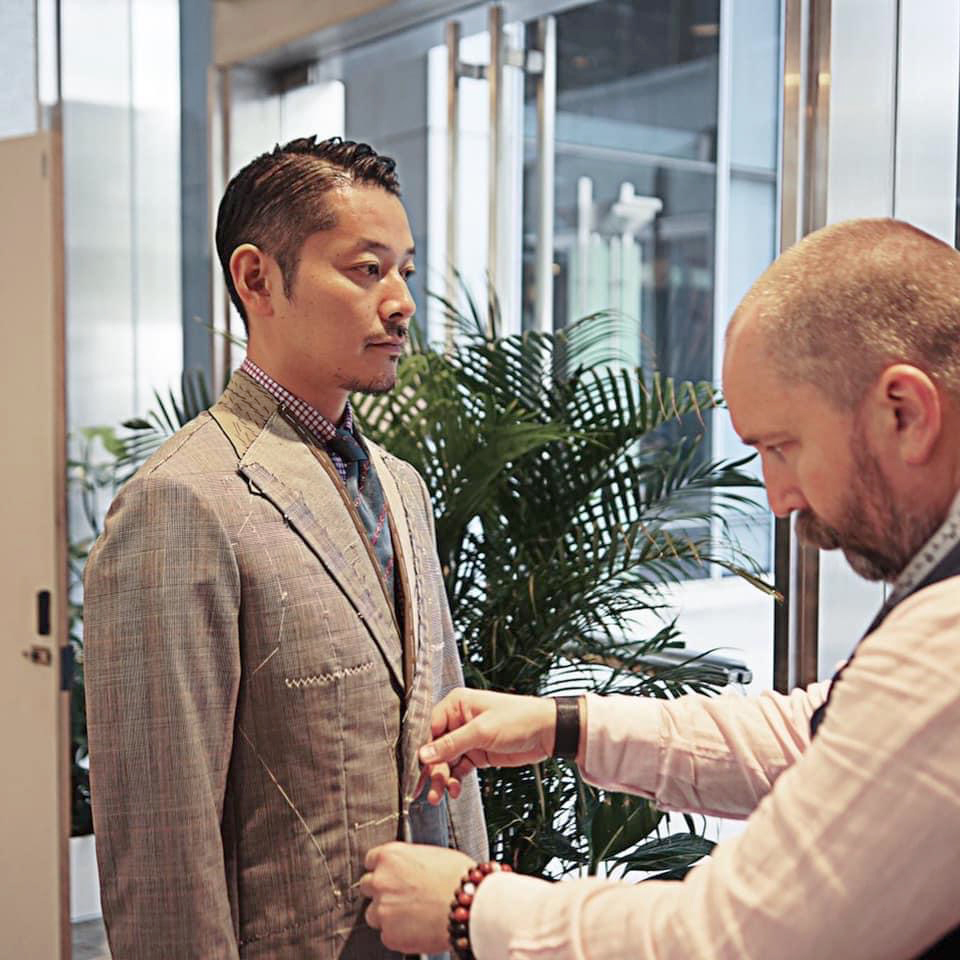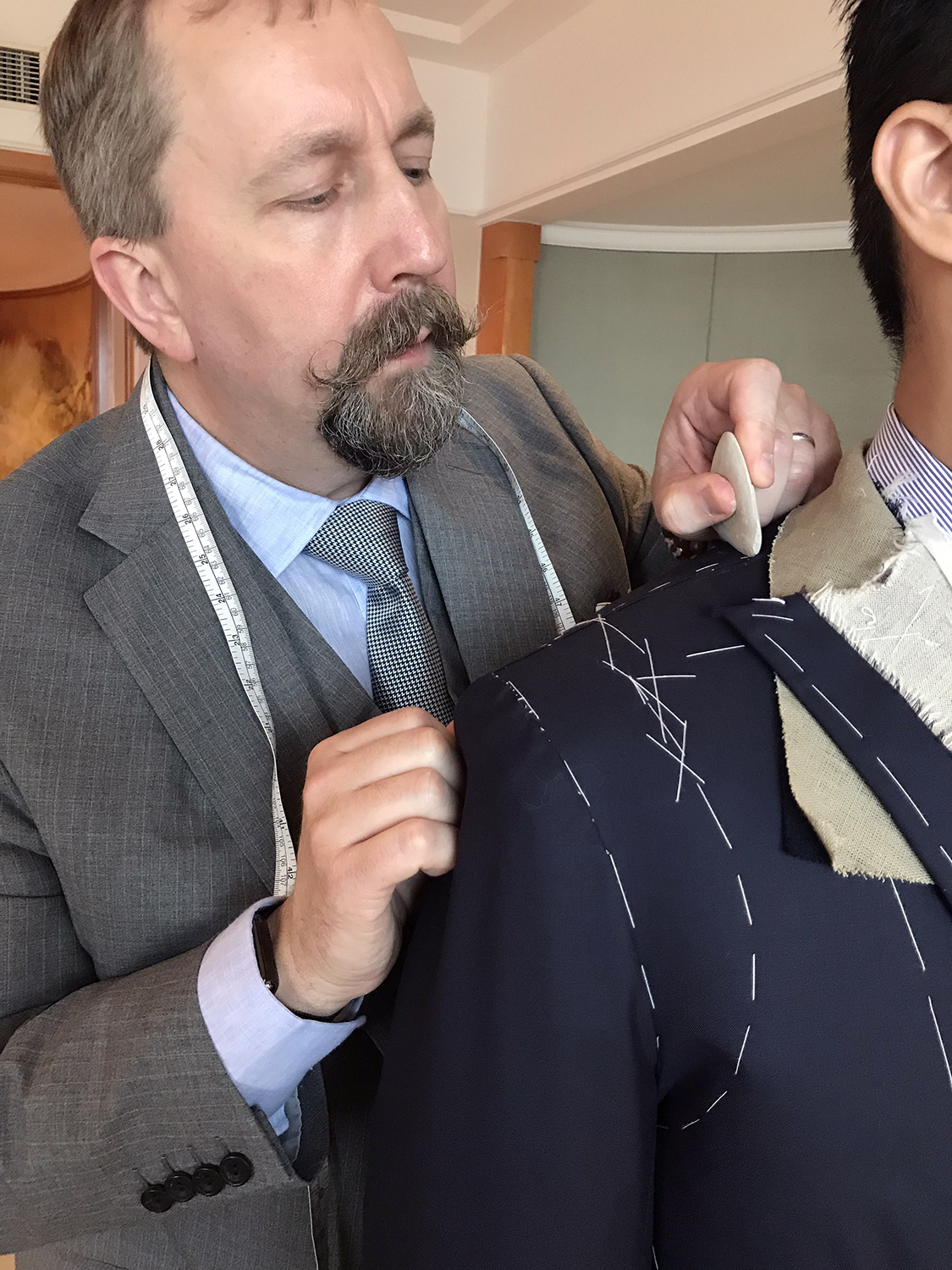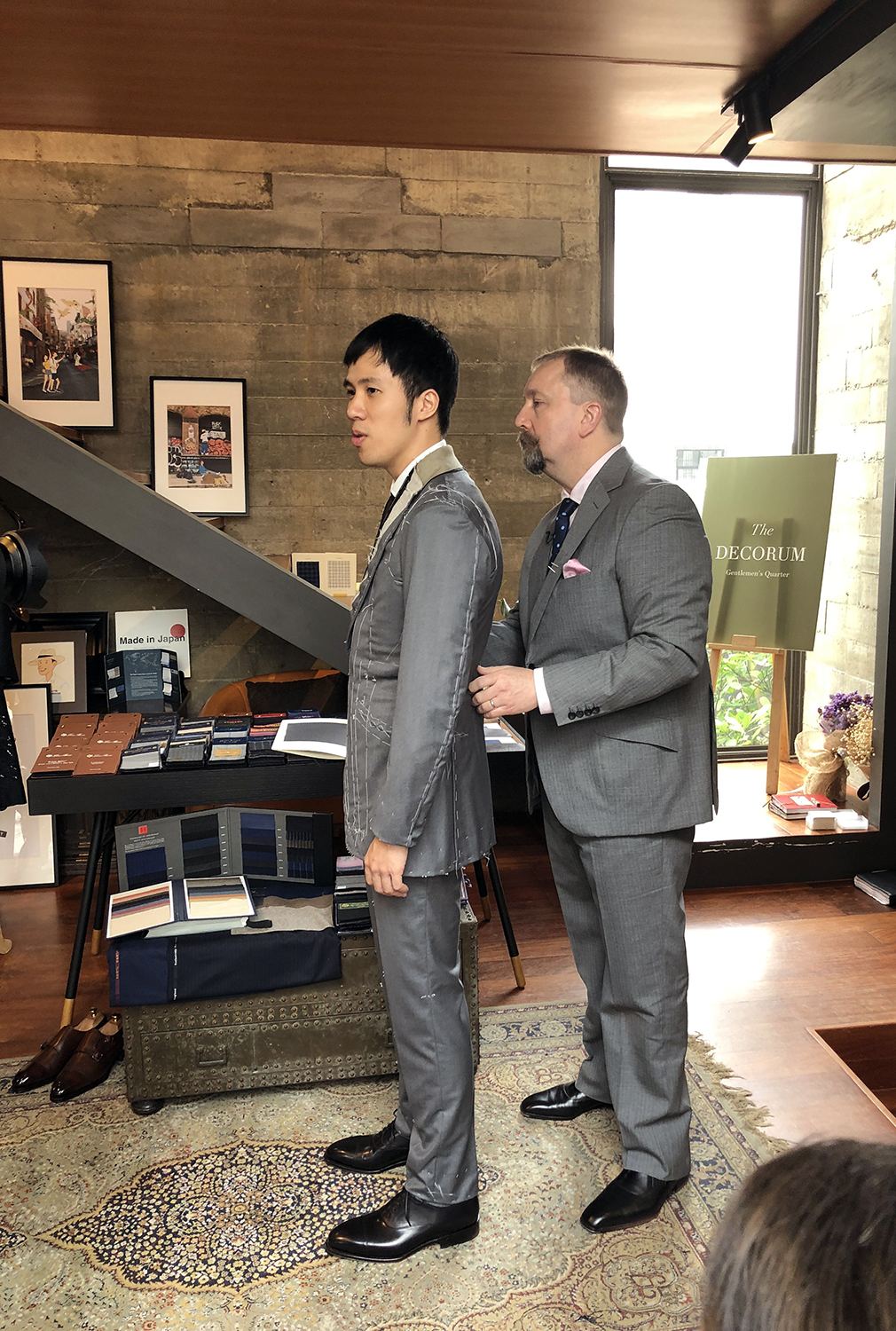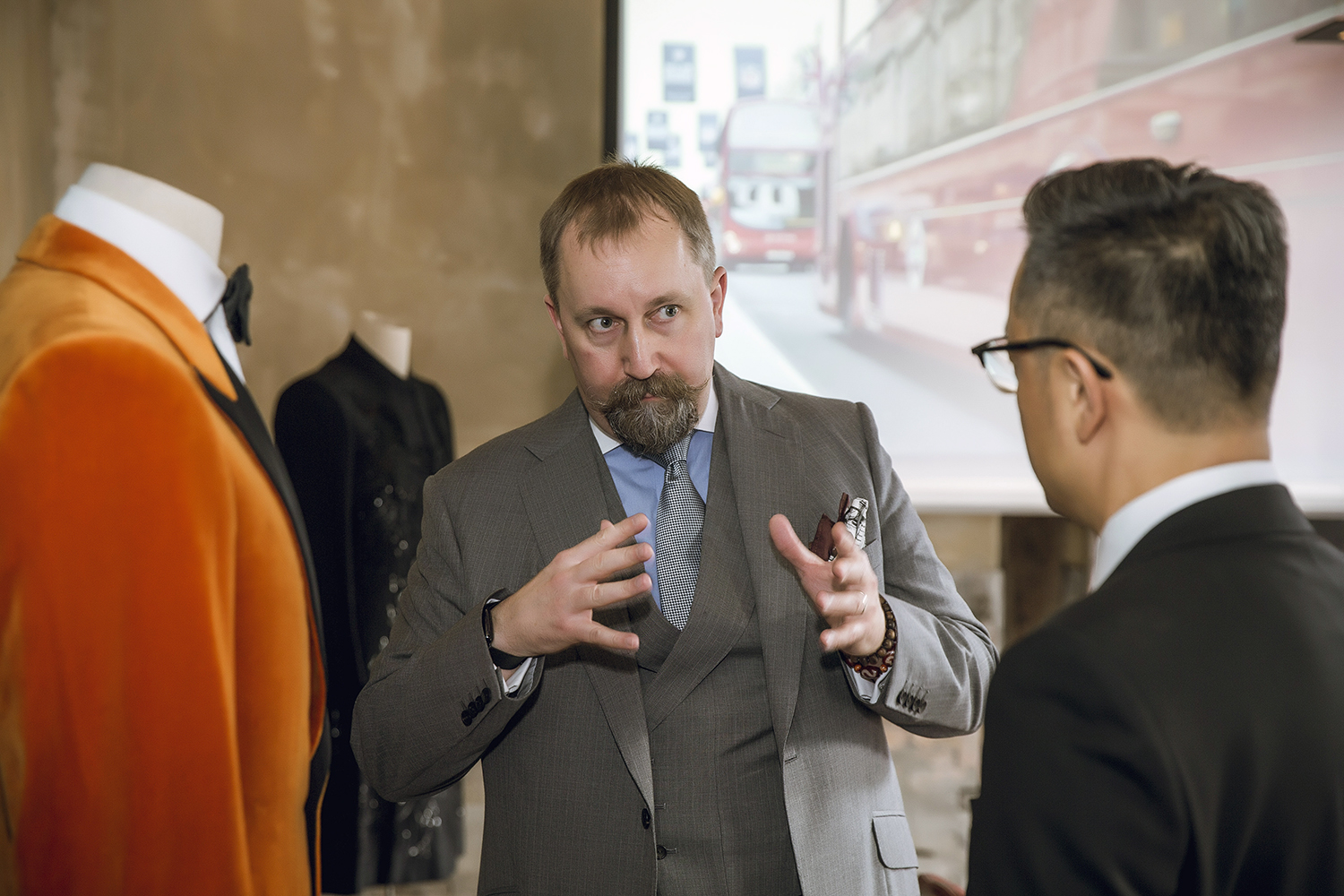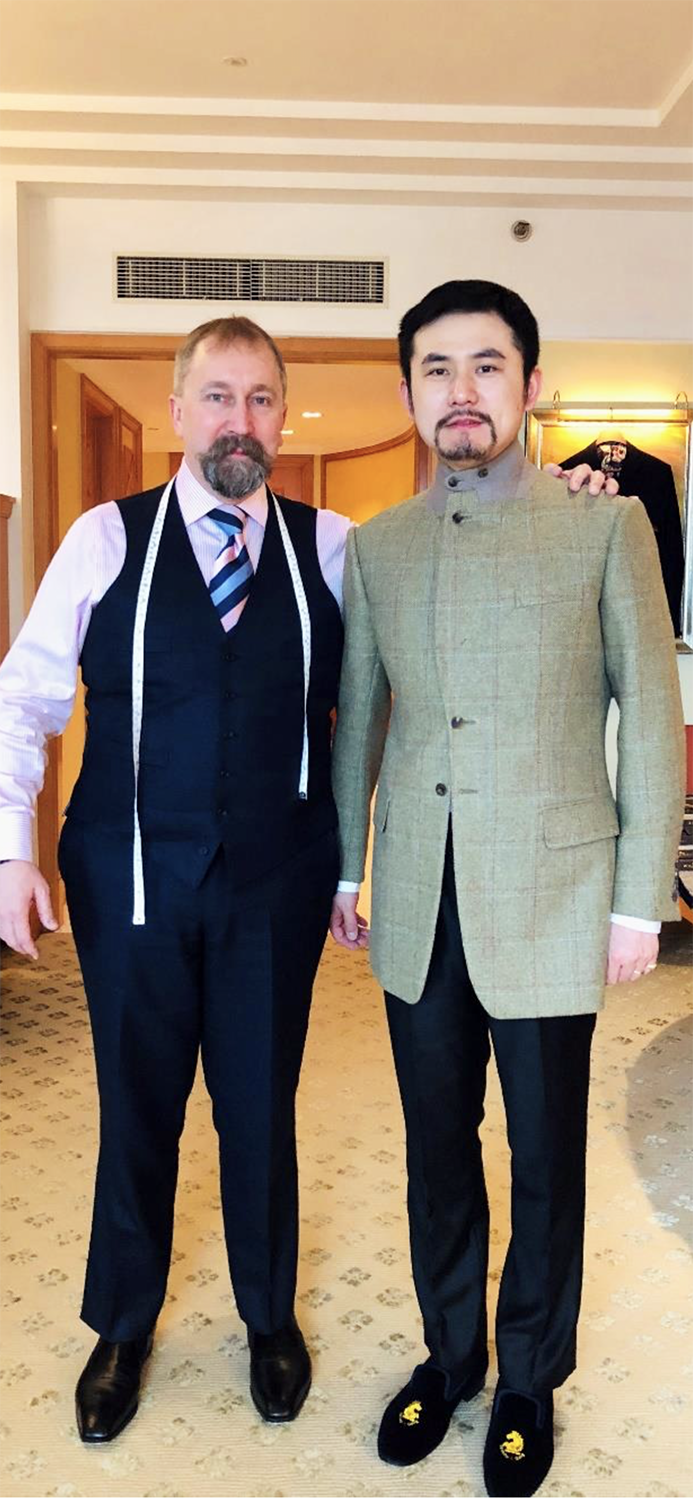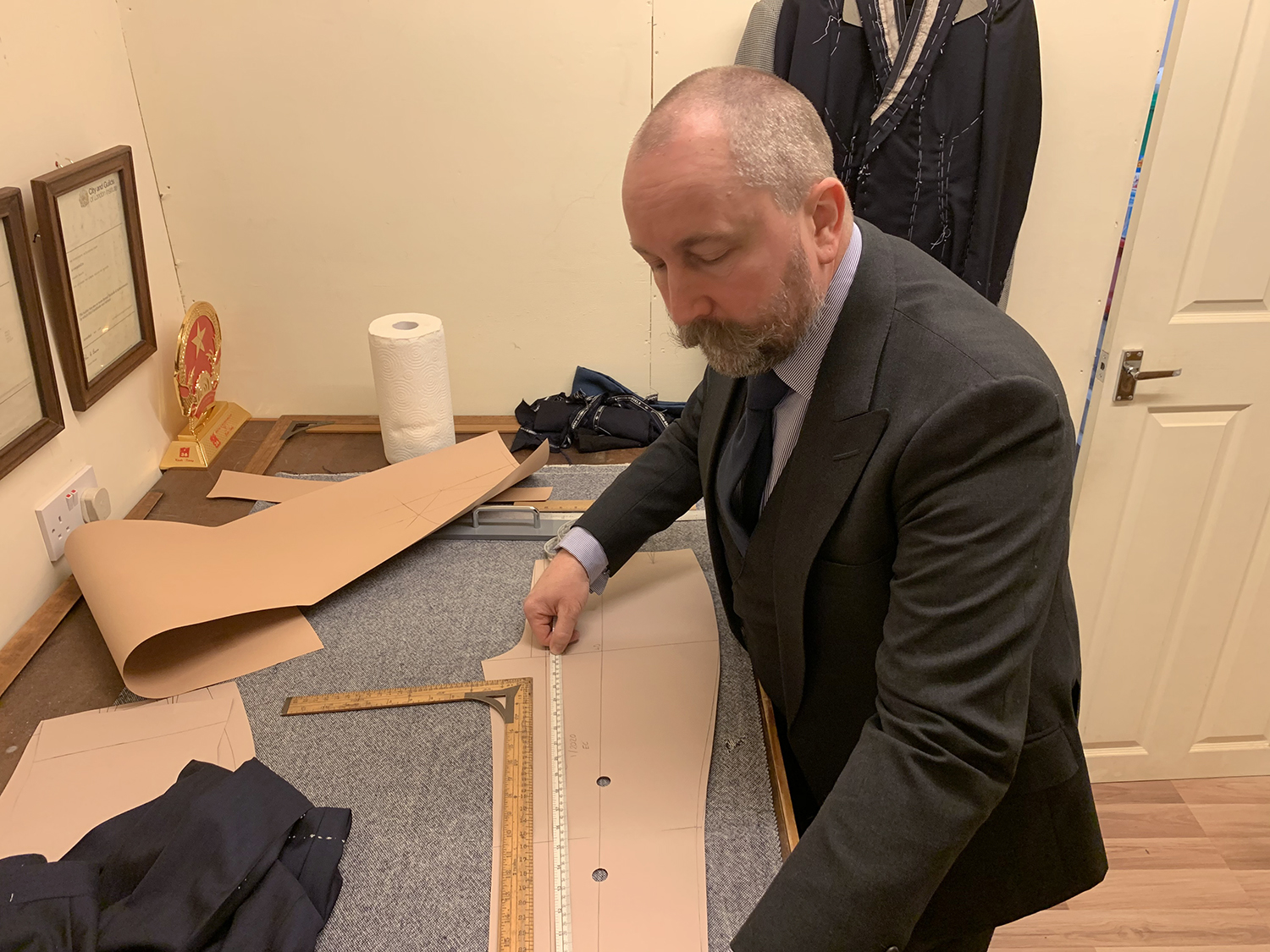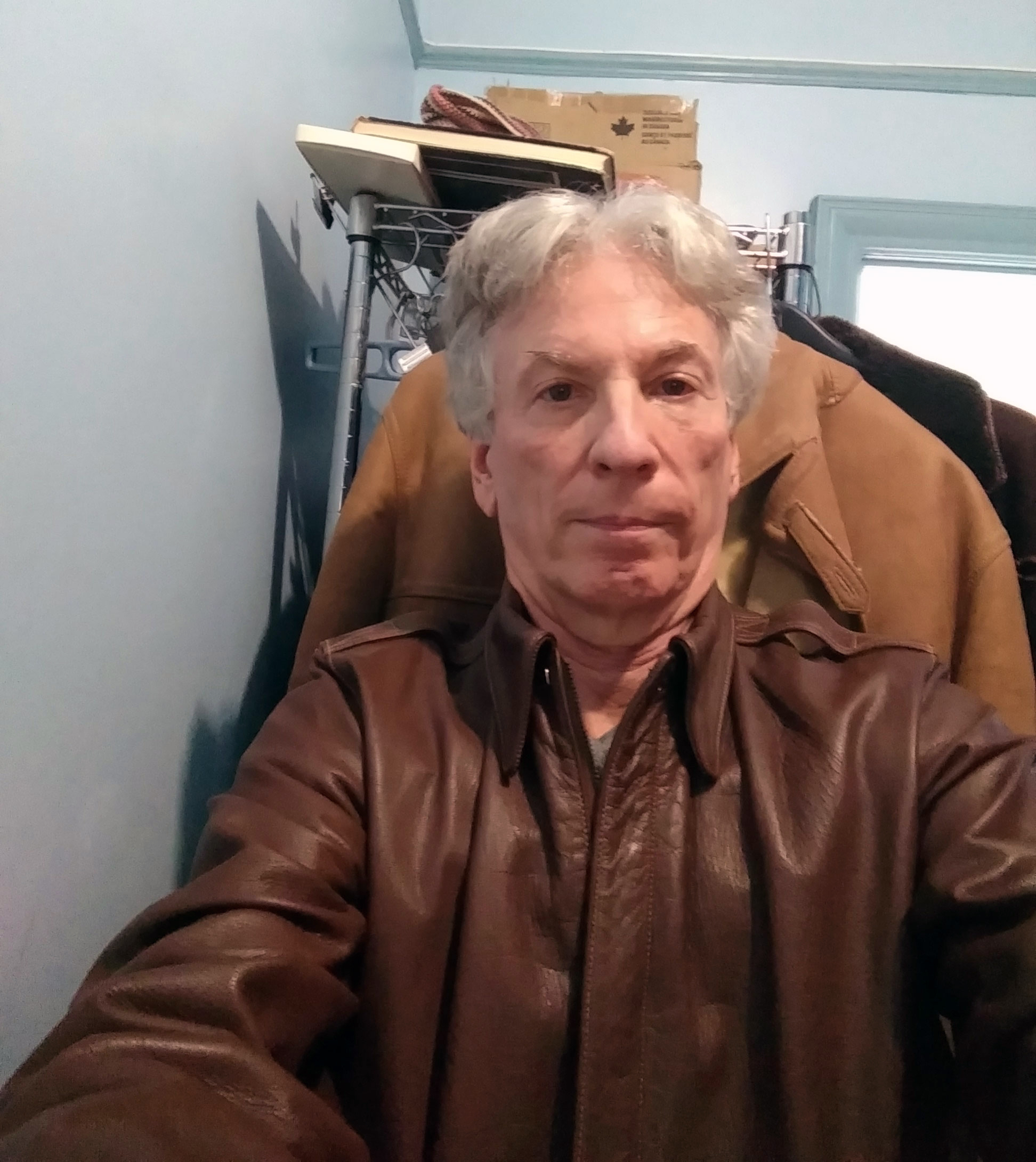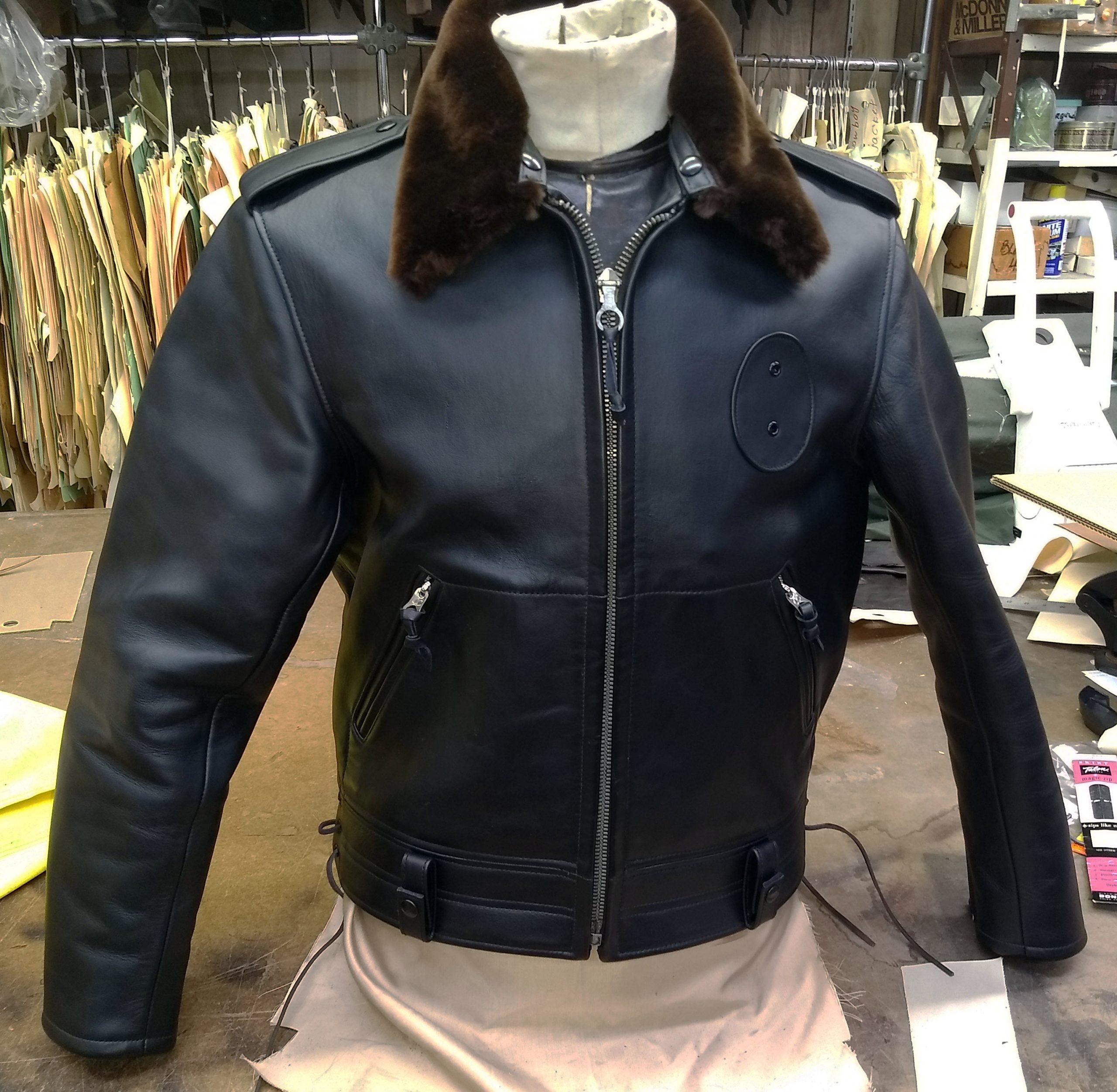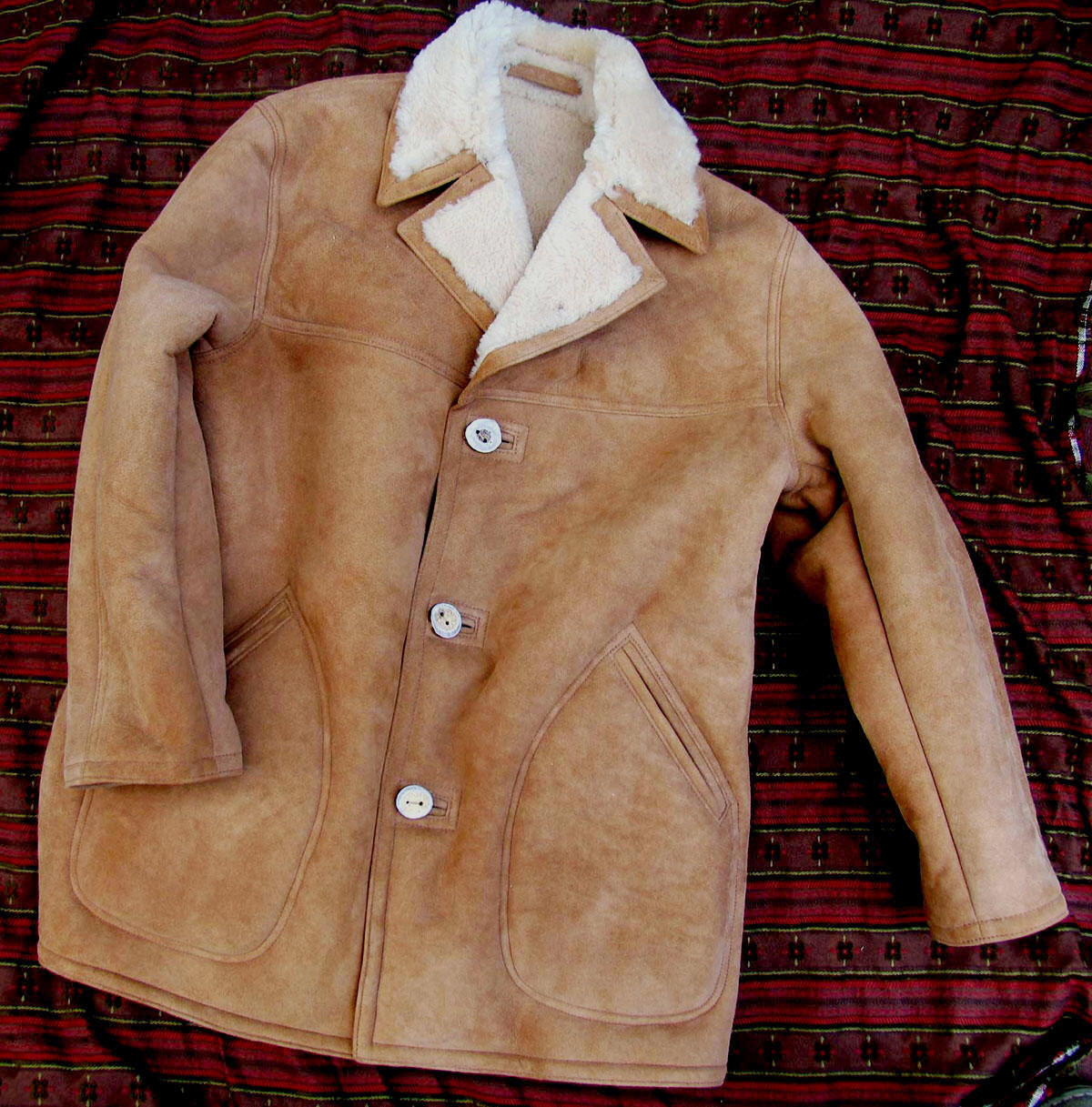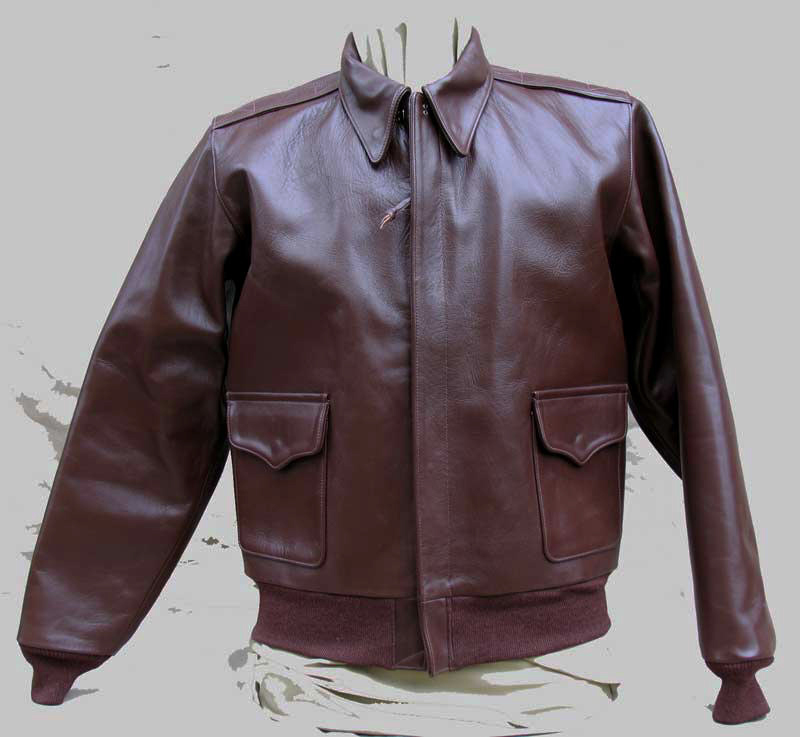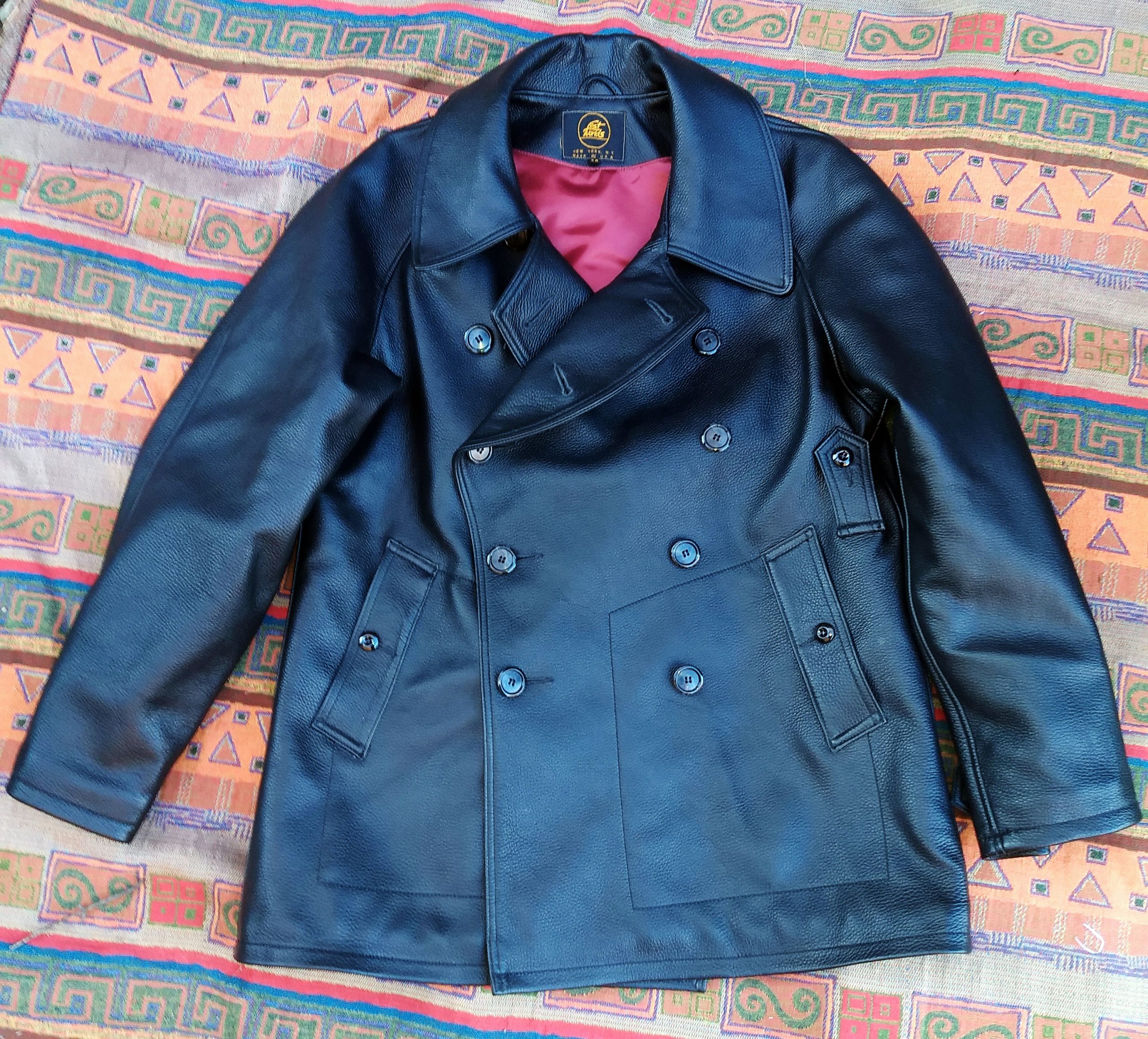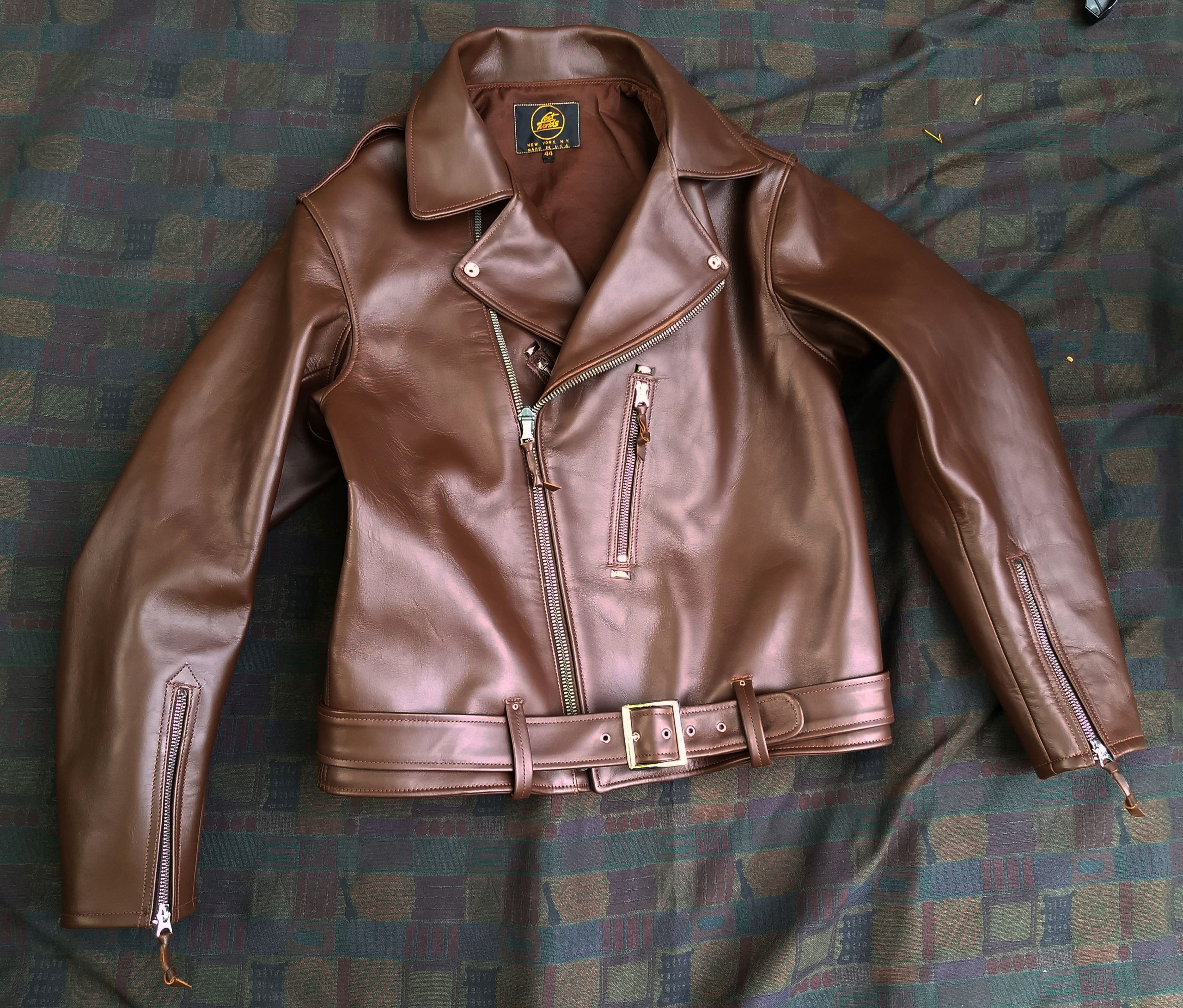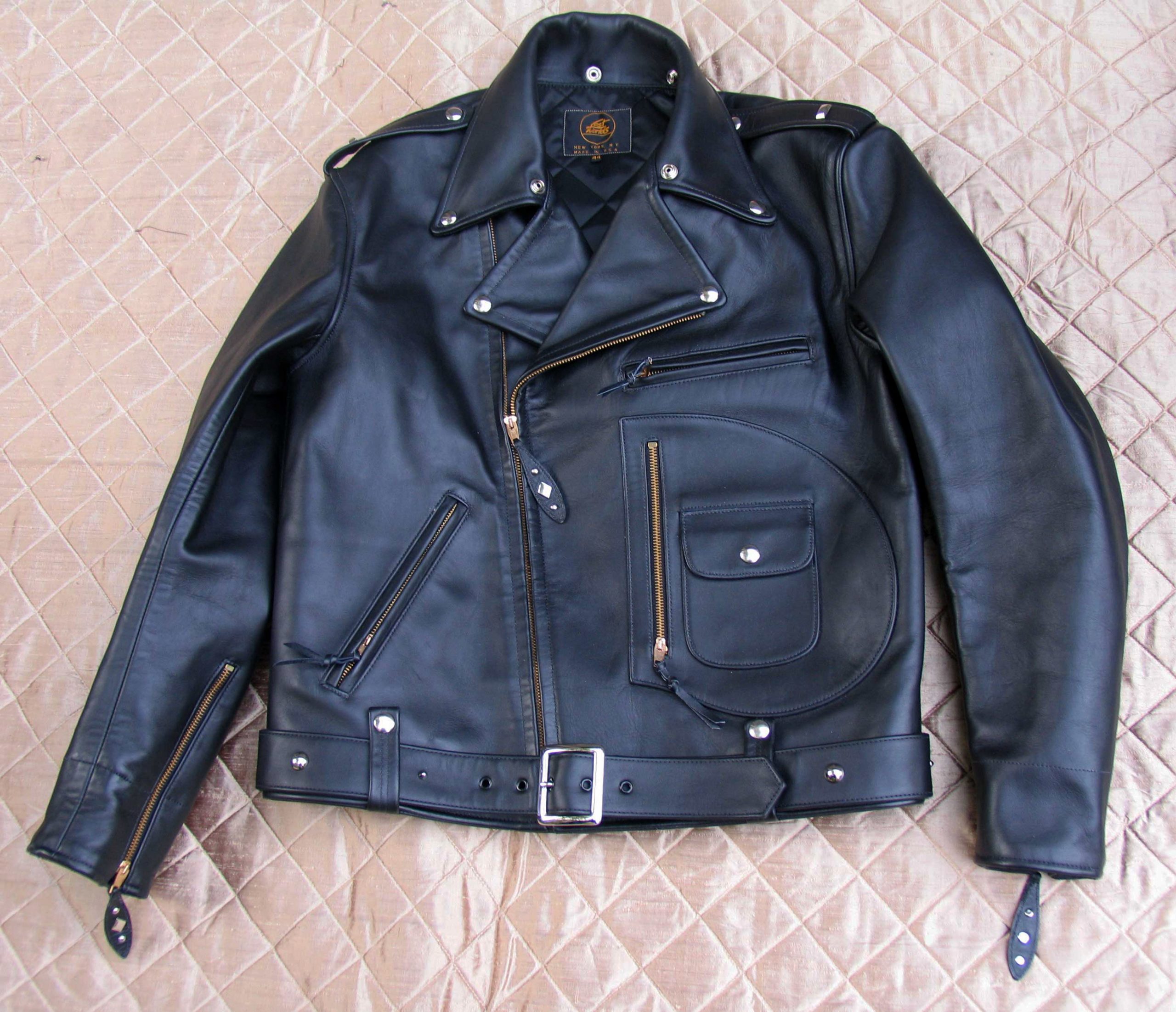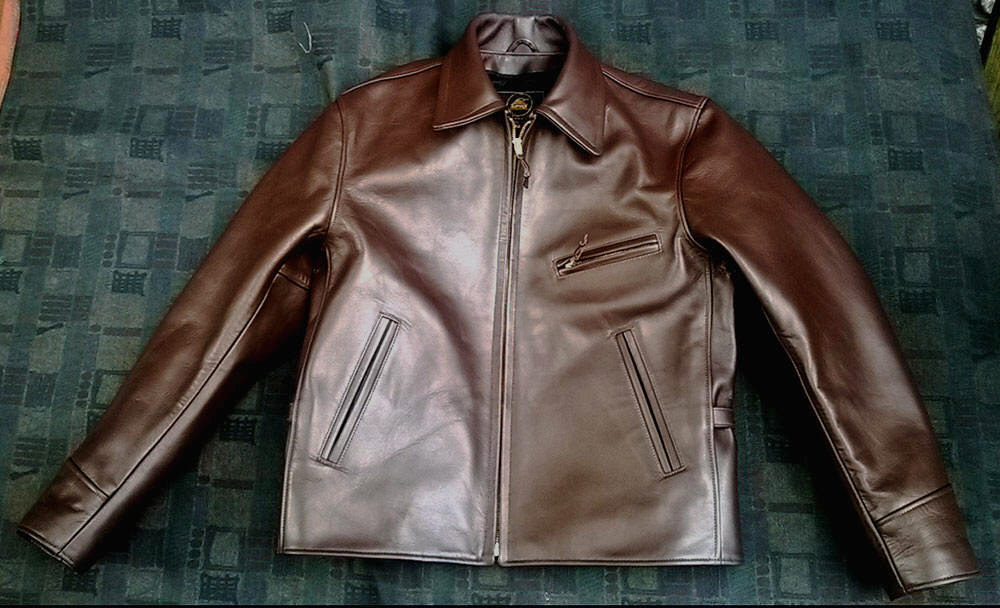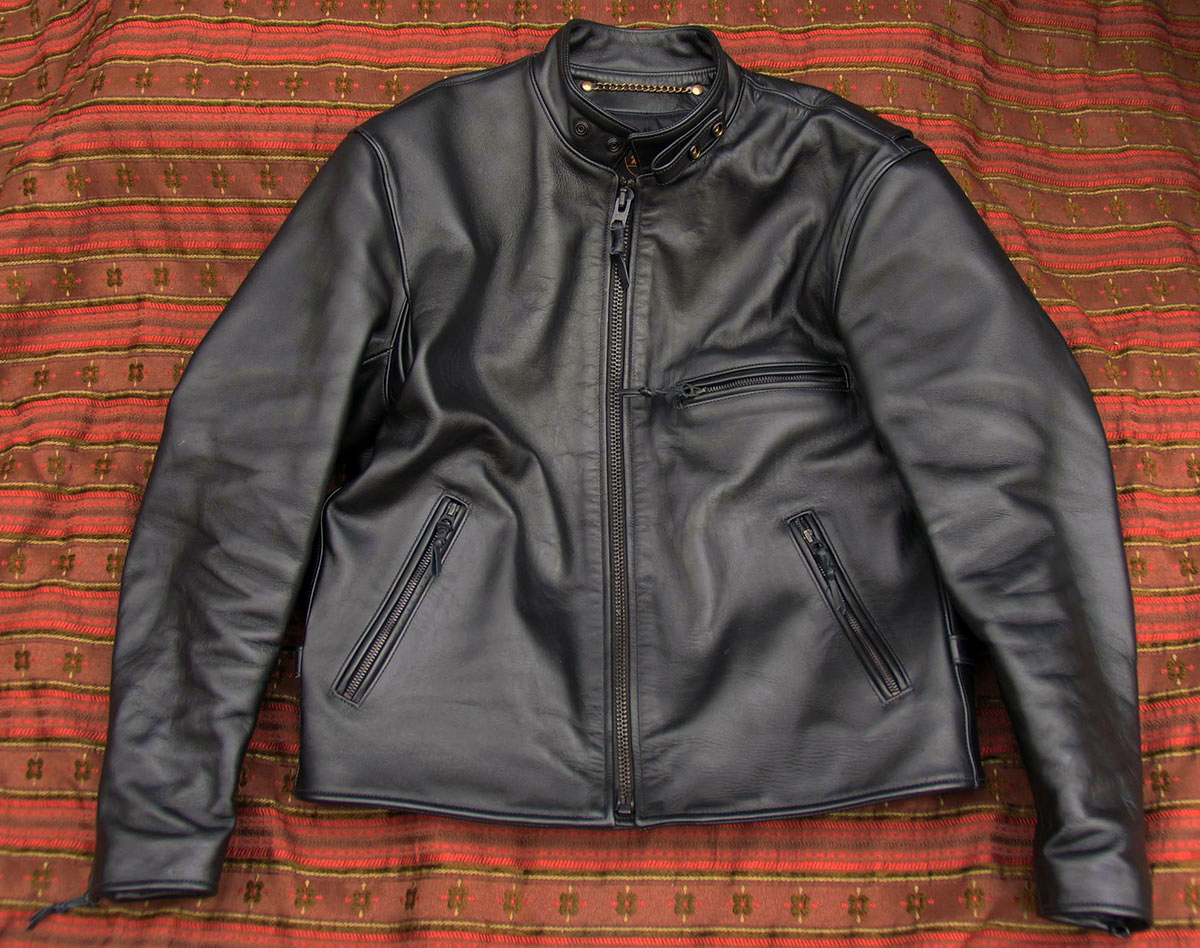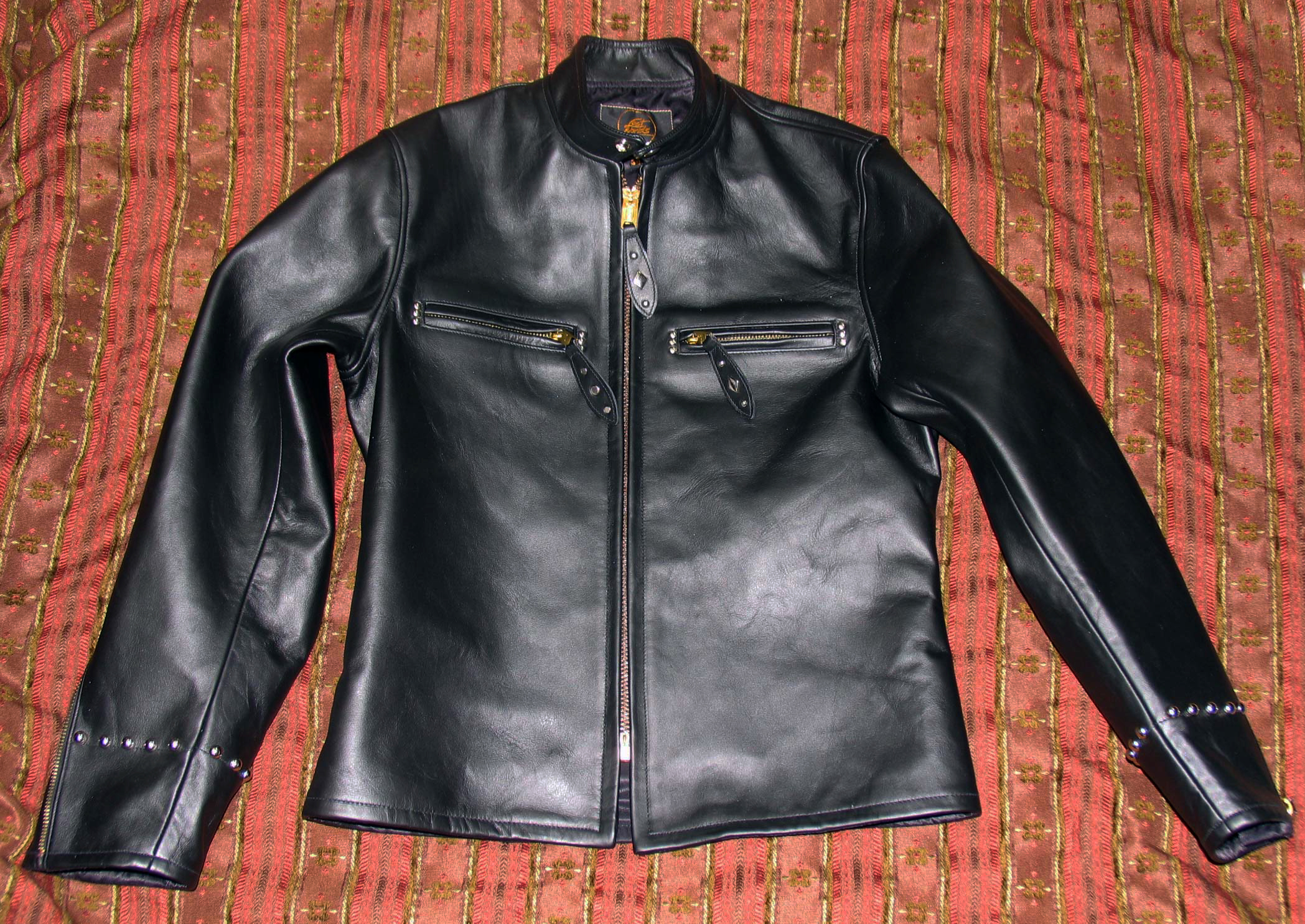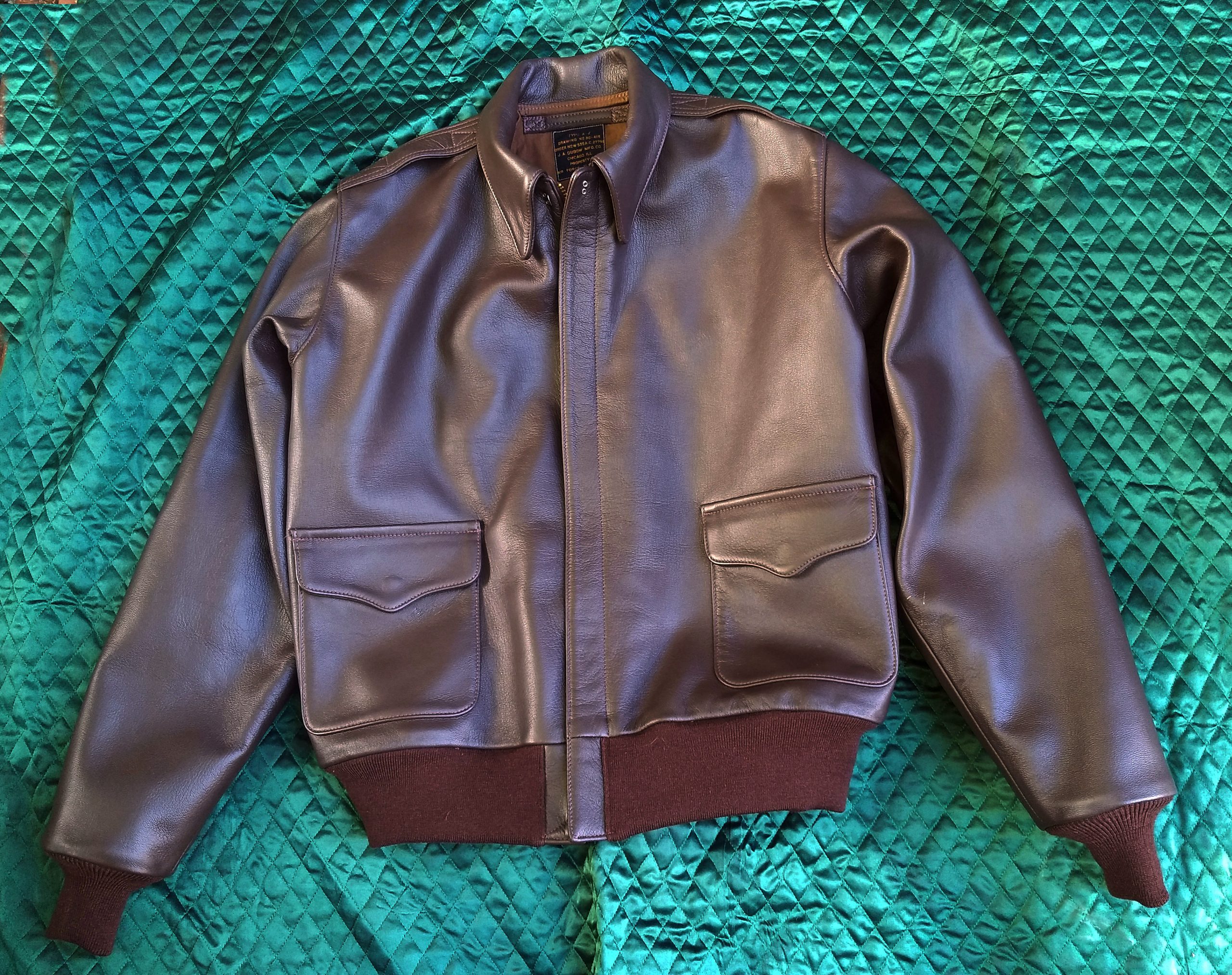An Interview with André Zimmermann
0December 17, 2020 by Ville Raivio
VR: Your age and occupation?
AZ: 36. I am currently working as a freelance consultant, helping my clients to (hopefully) improve their communications. This means basic work from writing compelling texts and speeches to more elaborated strategic advice and campaigning concepts.
A thing of beauty is a joy forever: Vintage Barbour jacket paired with wool tie and tweed cap
VR: Your educational background?
AZ: I hold a master’s in political sciences with minors in cultural anthropology and public law. I graduated from the University of Kiel in Northern Germany, which is also my hometown. I spent some time abroad in Göteborg at the School for Global Studies and in Stockholm, working for an intergovernmental organization. I have also been to China to explore the country and Chinese culture. After more than seven years in Berlin, I am now living in the most British of all German cities, Hamburg.
VR: Have you any children or spouse (and how do they relate to your clothing enthusiasm)?
AZ: No kids, no wife. Or is it no wife, no kids?
A proper country wardrobe would be incomplete without animal print ties
VR: …and your parents and siblings’ reactions back when you became interested in clothes?
AZ: “Let him do his stuff…”
VR: What other hobbies or passions do you have besides apparel?
AZ: I am a passionate road cyclist, runner, coffee drinker, whisky tippler (Scotch, mostly), book collector, munro bagger (far too many still on the bucket list).
VR: How did you first become interested in style, and when did you turn your eyes towards more classic pieces? Why these instead of fast fashion?
AZ: My interest in style and clothing emerged while working in a menswear shop during my university time. I sold shirts and ties, but mostly the stuff you can buy on the high street. This was also my first encounter with the fashion business and the fast fashion concept. I saw the overproduction, masses of shirts and ties that likely would never be sold. That really makes you reflect on all things fashion, especially the economic power of the retailers and brands involved in the whole process from production to selling clothes. Fashion retailers are large enterprises, they need to pay their employees, they need to serve their customers and they need to keep their shareholders happy. That’s ok.
Style-defining for a preppy look: bright colours, button-down oxford shirts and bows
However, it always about the how. And this is something we can influence since the most powerful part in the value chain is: us. It’s fundamental how we as consumers act. We all should ask ourselves: How can I contribute to change the world for a better? Can I refine my consumption patterns, for instance shop local or buy less? In the end, we have the choice. It is completely up to each one of us to take the simple decision: to buy or not to buy.
Surprisingly, I try not to follow (fast) fashion trends. Most of the pieces I wear are pre-owned and come from thrift stores, eBay or platforms like Vulpilist. I love browsing vintage stores and the excitement of discovering new old things with a certain history, always hoping that the catch is as thrilling as the chase. In this context, sustainability is truly an important aspect for me. I always try to buy items that have the potential to last forever. The poem Endymion from the remarkable John Keats opens like this: “A thing of beauty is a joy forever: Its loveliness increases; it will never pass into nothingness […]”. These lines are brilliant and sum up my admittedly romantic connection to fashion and dressing. I’d rather save my money and buy a thing of beauty than a cheap piece that is ephemeral. Beauty, as Keats suggests, stays forever. It never fades away. That’s true. If I look at my well-worn Chrysalis tweed shooting coat (even after years it looks like coming right out of the factory), my twenty years old Barbour jacket or my Tricker’s penny loafers, the beauty even increases with the time passing. Give them some love, tenderness, Burgol shoe polish and a proper re-waxing, and they will keep you happy forever.
Barbour jackets are pretty versatile garments and can also be worn rather casually
VR: How have you gathered your knowledge of dressing up — from books, in-house apprenticeship or somewhere else?
AZ: Most of my knowledge and inspiration comes from books. I always loved to approach fashion and dressing from different perspectives: culturally and historically, politically and obviously literally. I have always been curious: Why are people dressing like this today and why did people dress like that yesterday? What are the societal mechanisms of fashion, how does fashion evolve and develop?
Many people think fashion is trivial and academia has discredited fashion as a superficial and shallow subject for far too long (and sometimes still does). However, from a sociological and anthropological point of view, fashion is a social product. There is culture, there is meaning and there is communication. Fashion can only emerge in reciprocal interactions between individuals or social groups. Looking at the past three centuries, fashion had a massive impact on social, cultural, and aesthetic modernisation. Trying to understand these transformative processes of social negotiation and mediation can be very informative and , yes, also entertaining.
The most fascinating of all cloth: Harris Tweed
VR: What’s your definition of style?
AZ: Well, it is difficult to define style in absolute terms. Style is used in so many ways by so many different disciplines, it seems rather resistant to any rigid definition. However, when trying to pin down what style is, I would say it’s a continuation, a cultural manifestation of a specific way of dressing. Style has a different quality in terms of time and space compared to fashion which can pop up instantly. Style is something that evolves over a long period of time and persists, aiming to create a kind of uniformity, something that one would say is permanently “typical” for a certain way of dressing. Take Preppy for instance. The sportive, relaxed and elegant collegiate look has evolved over decades. Today, most of us would refer to khakis, Weejuns and Shetland jumpers knotted over the shoulders as typically “preppy style”. Specific items have become an emblematic representation of the preppy concept and are understood by those who use them and share a common understanding of the vestimentary and rhetoric codes. But not necessarily all people understand them. And that is the great fashion and style conundrum. Why is something perceived a style?
In this context, I like the metaphor to treat style and fashion as (social) hieroglyphs. Just as hieroglyphs, styles and related clothes or adornments carry an enormous amount of information. They hide and reveal social status at the same time. They are inclusive and exclusive. They represent our definitions and expectations of the world. Deciphering these hieroglyphs and unravelling the conundrum is a pretty fascinating thing.
Source of inspiration and sartorial wisdom: Books on style, fashion and tailoring
VR: How would you describe your style?
AZ: The fictional James Herriot occasionally meeting Bertie Wooster for a drink or two. At times, especially when it’s dark and cold outside and both guys are tipsy already, Captain Archibald Haddock is knocking on the door with a bottle of Scotch in his hands (cask strength, for sure).
VR: Who or what inspires you in life?
AZ: Style-wise, the Instagram accounts of Bobby Waterhouse, Fabio Trombini , Tintinfellow and Zehbucow are great sources of inspiration for me. No one can wear tennis socks as smartly and elegantly as Bobby (not to mention his double-breasted outfits), indulging in the “memoirs_of_fabio” is the sweetest kind of escapism, Tintinfellow is as much entertaining as it is instructive when it comes to Britishness and gardening, and Stefanie impresses through sartorial creativity and very unique vintage dresses.
The truly British heritage of the preppy style is obvious: Shetland vest with fair isle pattern and Barbour jacket
VR: Finally, looking through your IG-account, your look seems very English. What do you view as the cornerstones of a nice British country style?
AZ: A proper (British) country wardrobe should definitely include Scottish tweeds. For me, there’s hardly any cloth compared to tweed. I actually love every aspect of the fabric’s production. It begins with the fact that clò-mòr (the Gaelic name which means the big cloth) must be hand-woven by the islanders at their homes in the Outer Hebrides, finished in the Outer Hebrides, and made from pure virgin wool dyed and spun in the Outer Hebrides. Harris Tweed is thus the epitome of sustainability and craftsmanship. And the only textile in the world that is entirely handmade and has its own parliamentarian act. How cool is that?
There are only few (if any at all) fabrics that are as versatile as tweed. Classic checks, herringbones, windowpanes, houndstooth, dogtooth, gun checks, Prince of Wales checks – you name it! And the distinctive texture and the feel of the cloth. It can be rough and tough, soft and gentle, colourful, dull, thick, thin, the variety of colors and patterns is endless. Tweed allows much flexibility.
And what’s most fascinating about tweed is that the cloth is imbued with something very personal and enchanting: There is a story inherent in every yarn. When wearing tweed, you can see the weaver in his shed pedalling the loom, you can hear the rhythmic rattling and clacking of the old machines, you can see the spectacular sandy beaches and the rugged coastlines of the Hebrides, the mossy greens, the rusty browns and earthy yellows of the island’s landscape, you can feel the cloth finished to perfection in the mill. Tweed is literally woven into the DNA and the identity of the islands. Tweed, in short, is magic.
Now you just need to throw on your old, shabby Barbour Beaufort jacket and the Plus Fours from Campbell’s of Beauly, put your wellies on (don’t forget the shooting socks with garter ties, even if you don’t go hunting this really adds some field sports flavour to the dress), keep your head warm with a proper tweed cap and off to the estate it goes.
Category Interviews, Men of style
The Keikari List of Great eBay Sellers
0September 26, 2020 by Ville Raivio
Over the years, I’ve spent quite a bit of time on eBay. Its selection is peerless and I’m spared the trouble of trawling through vintage stores which, to be frank, often have stock that doesn’t cross the bar. In the interest of my readers, today I’m sharing a list of sellers I’ve saved over the years. I won’t go through each one as most of them are individuals instead of stores, so there’s little info to be shared. All of them, however, have interesting clothes for sale for men who care about artisanal make, fine cloths, or rare items. The selections vary as time goes by and these sellers have fair enough prices to make the cut. Have a look below.
Category Links, Web stores
An Interview with Tailor Robert Bailey
0September 22, 2020 by Ville Raivio
VR: Your age and occupation?
RB: My age is 51. I was born in Aldershot in May 1969. My father was head cutter at Gieves and Hawkes in Sandhurst, Camberley, in Surrey, and he is now retired. My mother was a finisher (a kipper), that’s how they met. I am a master cutter. This means I can cut/make any garments bespoke and have over 35 years experience in the cutting room and fitting room. I have always been involved with bespoke tailoring, I am the 4th generation cutter from my family.
VR: Your educational background?
RB: My education was very standard. I went to the local junior and high school. Academically, I wasn’t great, I passed the O-level in Fine Arts. Maths, English, and Science were not my strong points as I had little interest in anything outside of football and drawing when I was young. Originally, I was going to study to be a chef. But as my enjoyment of cooking reduced, my desire to follow in my parents’ footsteps increased.
VR: Have you any children or spouse (and how do they relate to your tailoring enthusiasm)?
RB: I Have always been involved with bespoke tailoring, I am the 4th generation of cutters from my family. I am father to two boys, aged 17 and 12, and my hope is that maybe one day the tailoring bloodline can continue through one of them, at least. But I wouldn’t dream of pushing the matter with either of them. To be a bespoke tailor you have to completely love and understand what it is you’re doing all day, every day. Being a bespoke tailor is not just a job, it’s a way of life. My wife didn’t know much about bespoke tailoring when we met, but over time she has come to understand and appreciate exactly the love and enthusiasm I have for what I do. My sons have a certain pride in having a dad who gets to meet and dress some of the most stylish people around.
VR: ..and your parents and siblings’ reactions back when you decided to become a tailor?
RB: When I first told my father, Edward (Ted Bailey,) that I wanted to do what he does, he was a bit cautious and maybe sceptical about it as I think he thought I’d get bored of doing this after a while. But after the initial introduction to the world of bespoke tailoring it was something I took to like a duck to water. At this time I was a very shy and maybe a quiet lad, so my father wasn’t sure about how I’d cope in the fitting room. But once confidence in my work grew, so did my strength in character and I was soon taking command of what I was doing. But forever looking and learning how to improve my tailoring skills each day. But it was my father who insisted that if I wanted to get to the top of the trade I must study tailoring at college and I must find an apprenticeship in London’s West End.
VR: What other hobbies or passions do you have besides apparel?
RB: Being a bespoke tailor has always consumed most of my time, both the working day and many hours outside work, especially when traveling is taking place, which is very often these days. So, to say that I have any hobbies would be stretching it a bit, but my love is to try different varieties of food and drink. Traveling across Asia and Europe, like I do, gives me access to many of the most amazing and different cuisines from around the world. My particular favourite would be my visits to Tokyo. The food there is a different class, what they do to the food in Japan is mind blowing.
VR: How did you first become interested in style, and when did you turn your eyes towards more classic pieces? Why these instead of fast fashion?
RB: When you’re young and you first get in to the world of bespoke tailoring, it’s like, I’m going to change the world and drag this trade to the modern world! But after a period of time you realise, actually these are beautiful pieces of work in themselves and don’t need changing. That’s why they’ve stood the test of time and make the inelegant become elegant. A well tailored garment can transform the most challenging of figures into something quite extraordinarily perfect and well groomed. I used to think that was just a sales pitch, but it’s actually an amazing effect that a beautifully crafted garment can have on a person’s confidence, mindset and the impression to others.
When I started in 1985, the “look“ was big shoulders and heavy drape. It confused me why Savile Row didn’t cut that style too so they could make more sales and make more money, but one day it clicked! They knew that look would come and go and another look would follow soon afterwards, but they always knew that the classic bespoke suit, if cut well, would forever be the style that people will always want. That was a great education that has always stuck with me even when clients are asking for a modern look to their suit, they get what will last them for today and tomorrow, not just today.
VR: How have you gathered your knowledge of tailoring — from books, in-house apprenticeship or somewhere else?
RB: It was from the 15th of July 1985 to September 1990 when I was working at Gieves&Hawkes (Camberley) where my father was head cutter. I started as a Trainee coat, waistcoat, and trouser maker and I was striking (cutting cloth) in the cutting room. I was making and cutting civilian and military uniforms for Sandhurst Military College and the Gieves and Hawkes shop. My father told me that if I wanted to go far in tailoring I should learn to be a cutter, so from September 1986 to May 1989 I studied at the London College of Fashion as well as continuing my tailoring apprenticeship. I studied hard and passed my Menswear Bespoke Tailoring and Cutting course. I also passed City and Guilds Tailoring course.
By then the call of Savile Row in London’s Mayfair was too strong, and I was delighted to get a cutting apprenticeship from September 1990 to February 1996 at Davies and Son as a Trainee cutter, trimmer and helping in the shop with sales. I worked under Peter Forsey and Bill Matthews, learning cutting and fitting and striking. But in 1996, after 5 years of training, I was ready for my first cutting position and my previous company, Gieves & Hawkes in Savile Row, had a space available so I began cutting for and fitting customers at No.1 Savile Row, and also for a short time at Harrods.
In September 1997, I got a great opportunity coming my way, to learn from Michael Skinner, owner of Dege & Skinner, to gain some priceless experience and learn my trade from one of the best! As well as looking after customers in the Savile Row shop and my very first trunk show the to USA. In August 2007, my quest for more and more tailoring knowledge and experience took me to Davies and Son where I tasted my first experience of Asia, where I took over from Mr Peter Harvey from running the Tokyo trunk shows. That was where my love affair with this part of the world began! It was during this time that we tried our first and Savile Row’s first Seoul trunk show in 2013!
But back then nobody knew where or what Savile Row was about, unlike nowadays where there is so much more interest following the Kingsman movies and the Mecca that Seoul has now become for style and fashion.
At Davies & Son, I was Head Cutter, production director and permanently busy looking after customers in the Savile Row shop, travelling twice/ three times yearly to Tokyo (Harajuku and Shibuya) and holding special promotions with the Beams Company (Harajuku branch), as well as continuing three times yearly to Oslo for trunk shows . But my desire to make Asia the sole focus of my attention took me to Huntsman of Savile Row. The owner of the business was an executive producer of the movie franchise and saw a gap in the market to build up. So he gave me the mission of creating and serving the Asia clients with 4 visits a year.
It started with regular visits to Seoul, Singapore, Tokyo, Hong Kong, Beijing, and Shanghai. This was so successful that I soon added Bangkok, Taipei, and Shenzhen where I developed a reputation for being able to produce a perfect garment for each client to their own doorstep despite the distance from London’s West End! It was my job to organise, plan, and grow the business across Asia and make it the success that it became, it’s now the biggest and most far reaching Bespoke trunk show that Savile Row has ever achieved, and I’m very proud of what I’ve left behind.
VR: You have worked for a number of well-known Savile Row companies. Would you say the differences between each have more to do with nuances than distinctive cuts?
RB: Having worked at Gieves and Hawkes, Dege and Skinner, Davies and Son and Huntsman, the style of cut has always been very similar. The G&H and Dege house styles are very similar due to the military background of both houses. Both used to service the military uniforms at Sandhurst military college regularly, and at Pirbright plus the queen’s military barracks, so the style comes with a very military influence and it’s where I learned to master the art of the very high armhole. It’s especially necessary for the officers to salute in comfort and not drag the coat up when doing so. At Davies & Son and at Huntsman, the style is similar to each other, a more business like garment with a well structured shoulder and chest. Davies are a more adaptable silhouette to suit each figure whereas Huntsman are very rigid regarding changing the silhouette, you get little say in the look of the suit; the comfort is up to you, but always comes with roped sleeves and a strong shoulder line. Davies cater for a soft or hard shoulder line.
VR: When did you decide to set up your own business and what goals did you set for yourself?
RB: When Huntsman told me they were scaling down the Asian business in light of the COVID-19 situation, I decided that now is the right time to do what I do best. But working for myself as I knew what I’m capable of doing and it gave me the confidence I needed. So I’ve decided that now is the perfect time to launch my own bespoke tailoring business where I will be regularly visiting Seoul, Hong Kong, Beijing, Shanghai, Tokyo and Bangkok, and hopefully expanding further when the time is right. I plan to open a small classic tailoring shop in the heart of Edinburgh as there’s a shortage of proper bespoke tailoring shops in Scotland. London is a very crowded market now for tailoring and not all the bespoke establishments can actually cut a proper garment themselves so outsourcing is rampant. I’ll be in charge of absolutely everything at Robert Bailey Bespoke.
VR: What’s your cut and House Style like?
RB: My house style has been very heavily influenced by my 35 years in Savile Row. My aim is to create an immaculate-fitting suit or jacket that is like a glove yet has the comfort and feel as if it’s not even there. Yet it’s made by the world’s finest tailors and cut by my own hands to make even the most difficult of figures look and feel amazing! My garments will have the structure and same make as has been traditionally the way of Savile Row for over 200 years, but the shape and silhouette to make you look like you’ve been working out in the gym for a year and look like it was made only for you, nobody else. I am a fully accomplished ladies’ cutter as well. My tailoring team are all Savile Row- and Soho-based so you get the same garments from me as you’ll get from one of the houses there, but without the extra overhead cost.
VR: Who or what inspires you?
RB: My inspiration comes from Alexander McQueen and Tommy Nutter. They both grabbed Savile Row by the balls! Yet they didn’t betray the heritage of The Row. Alexander McQueen, especially, is a hero of mine as I too learned tailoring from the grass roots through to the finished garments. There isn’t much that I don’t know about bespoke tailoring and the needs and wants of a truly beautiful fitting garment. My knowledge and experience is second to none and I have had the privilege to meet and make suits for some of the most wealthy and most famous clients in the world! However, as the best tailors will agree, “what goes on in the fitting room stays in the fitting room!“ So you’ll not get gossip or juicy stories from me as discretion is of the upmost importance in my trade and every client will receive the privacy they need and expect from this tailor. I think Tommy Nutter took many anecdotes to his grave, he was the ultimate in being discreet. Haha.
VR: What’s your definition of style?
RB: Style, to me, is someone who dresses in a way that totally co-ordinates with their mind, body, and soul. It’s not influenced by fashion but by personal taste, sometimes being brave with regards to which cloth they choose for that next new garment but not caring about what others might think about it.
VR: Finally, how would you say Savile Row tailoring differs from tailoring taking place in the counties around the UK?
RB: Having spent the last 35 years working in Savile Row, the one major difference in the fit and in the tailoring I found is the armhole. Savile Row and The West End of London specialise in a high armhole, some achieving this more effectively than others, yet those out of town seem not to concentrate on this aspect so much. To me, that’s a vital part of the fit and I’ll always strive to create the highest armhole I can on a garment as I know that this is the beauty of having something made especially for you, it’s the key to a beautiful fit. But you need a good coatmaker who will make the coat to the cutter’s instructions and not take the easy way out, as a small, high armhole takes more TLC than the “one size fits all“ style of coat.
Category Interviews, Savile Row, Tailors
Quality Tailoring on eBay
0August 20, 2020 by Ville Raivio
I have finally decided to empty my coffers and clothing collection through eBay as well. Everything is new, near new, or worn just a bit and all pieces are well made. At the moment, my page has shoes from Saint Crispins and Edward Green, tailoring from Richard Anderson and Oxxford Clothes, and shirts from Kiton and Isaia. More to come from time to time as my preference and collection changes.
Category Links, Web stores
An Interview with Stuart Clurman from Lost Worlds Inc.
7July 23, 2020 by Ville Raivio
VR: Your age and occupation?
SC: 69, Leather Outerwear Manufacturer.
VR: Your educational background?
SC: B.A., English. 4 years Ph.D. Program, English, No degree. Published two articles on film and literature: Postif and Journal of Modern Literature (1973).
VR: Have you any children or spouse (and how do they relate to your clothing enthusiasm)?
SC: Divorced, one son, no interest in leatherwear business.
A custom California Highway Patrol model in horsehide
VR: …and your parent’s and siblings’ reactions when you first chose leather clothes as your trade?
SC: No reaction other than parental supportiveness.
VR: What other hobbies or passions do you have besides apparel?
SC: I collect US Militaria, Vintage Guitars and Amps. Like film, good cars, Americana, books, women, genuine late ’60s rock and roll.
The Fairfield model in sheepskin
VR: How did you first become interested in clothing, and when did you turn your eyes towards leather jackets?
SC: Growing up in the 1950s, I was drawn to WWII movies and the flight jackets therein (virtually all incorrect!) as well as the rugged jackets in ’30s – ’50s melodrama. And vintage western wear in the pre-polyester decades. In the ’60s, British rock and roll garb fired my imagination and wannabeism.
The A-2 in horsehide
VR: How have you gathered your knowledge of the topic — from books, in-house training, workshops or somewhere else?
SC: From collecting original jackets, beginning in the early ’80s, through a disappointing learning curve period selling a longtime mfg.’s apparel, then learning to source and develop correct materials, such as our proprietary horsehide, then to pattern, produce and refine vintage styles to high levels of craftsmanship. Everything by trial and error, there were no road maps.
The Courier peacoat in deerskin
VR: How would you describe your own style?
SC: My personal style? Utter non-conformity! I rarely dress in other than Wrangler 13MWZs but own plenty of American and English shoes, boots, jackets, coats. Example of my “eccentricity”, or is it just Cool, i.e. epater le bourgeoisie? In NY in winter, I wear an old West German Loden duffle with USA Chippewa snake boots tucked inside Brit moleskin trousers, of course!
My professional style? Doing things correctly, thinking outside the box. Loading my ears with wax like Odysseus.
The Leathertogs A model
VR: Who or what inspires you?
SC: My inspiration is a personal demon: a thirst for excellence, uniqueness, consistency. Jackets beyond mere clothing, unrelated to ephemeral trends. Clothing that endures.
An external raison d’ etre – I hope these French droppings are impressing the reader — cited on our web site. Borges’s short fiction Pierre Menard, Author of the Quixote in which the title character decides to re-imagine Cervantes’s Don Quixote completely – every word, comma, sentence … Everything — not from memory but from pure inspiration and imagination because, as the character Menard “writes,” such will create a ‘Quixote beyond Cervantes’. A fable of creativity, what I try to do in our modest way. Reimagine original examples from the past from the inside out rather than from the outside in as hobbyists do. To afford a glimpse into the soul of the past, not a gravestone rubbing.
The Buco J23
Does this mean taking apart an original jacket? Absolutely not. I’ll address that inanity below. Rather, understanding proportion, nuance, intention, spirit, gleaned from forty years of immersion in this truly lost world, forty years in the wilderness, using my academic background to seek (and speak) uncontaminated truth, not produce a one-dimensional Xerox-like jacket replica of some relic found on eBay or in some vintage scrounger’s closet. The jacket should be a portal, not mere postcard.
VR: What’s your definition of style?
SC: Craft united with function to produce beauty, individuality. Traditional masculinity. The criterion of Cool in an uncool world.
The Ryder in horsehide
VR: If what I’ve read is true, you’ve ripped apart vintage jackets to see their inner workings. Is this done for faithful reproductions or do you believe leather jackets were just made better before?
SC: A ridiculous internet myth. I’ve never ripped apart a vintage jacket. Whichever self-appointed internet expert – and there are plenty – came up with that one! A jacket can only be made one way and has been since Neanderthals or earlier went from one-piece pelts to attached sleeves and pieces. Looking at a jacket tells the professional, as opposed to the hobbyist, everything. Ripping apart a jacket to see the backside of the leather panels? Well, some modern repro jackets should be worn inside-out, because the exteriors leave so much to be desired, namely truth and cojones. Honestly, how could a 70+ year old leather jacket, evidencing wear, shrinkage, stretching, etc. provide anything other than inaccuracy if some neophyte tears it apart as if it were a machine to view the cogs? Lost Worlds sees the forest, then the trees. It’s deductive, arising from pre-knowledge gleaned from wide experience of the correct relations between elements across the tradition. It’s having the eye.
The Easy Ryder in horsehide
VR: To add to the previous question, how were leather jackets different before our times?
SC: Materials, functionality, fit, image, workmanship, Style. Clothing expresses the age in which it’s made. Compare the 1930s, say, to the 1970s. Double-knit, anyone?
VR: When did you set up Lost Worlds and what was the motivation?
SC: I began Lost Worlds in 1986 selling the Willis & Geiger Outfitters line through a retail mail order catalog I designed and printed. W&G was undergoing consistent management, quality and market problems at that time and my valid efforts at popularizing the brand and expanding sales were ignored by the company. I also suggested their hiring me to source genuine Horsehide rather than the substandard stuff they were being supplied. They ignored me there too! Seeking quality, I was perceived as a threat by the new management. This was my first business contact with replicas, however flawed, of some of the classic and vintage jackets I had begun collecting earlier. By 1992, I decided to follow the entrepreneurial path to make notable leather jackets to my criteria of quality and authenticity.
The Buco J100 in horsehide
VR: How is LW different from other leather jacket makers?
SC: We don’t preach to the choir. I don’t make flavor-of-the-month jackets. We make jackets I perceive as historically interesting, stylish, technically challenging, ultra-cool and high performance. What I like. All our gear is or can be used on motorcycles or in challenging environments and always rain and snow. None is fashion clothing, for posing, faux hipster boulevardier wear for Tokyo, Manhattan or London dive bars and the like. Making fewer but benchmark styles is our mandate and we eschew every tiresome minor vintage variation through boredom, not inability.
VR: How would you describe the House Style of your designs?
SC: Heirloom grade classic American rugged wear devoid of fakery, i.e. prêt-à-porter antiquing, overdrumming, flimsiness, gimmick tanning with tea (or is it urine?) to simulate top finish fading from black to brown in a vintage jacket after decades of dry storage, wear or exposure, etc. Our signature American Horsehide from our own tannery is peerless, famous, natural full grain, unduplicated and better than vintage examples. Period. Every hide – deer, sheepskin, goatskin – is tanned to our specs. Nothing off the shelf, everything from USA.
No pandering to fashionistas and those who find necessary ego completion in Internet blogs, forums, chat groups, etc. where the fundamentalist dispersion of ignorance and bias laden with ulterior commercial motive quickly converts those so inclined.
VR: Do you have a favourite leather and jacket model? (If you do, why these?)
SC: I started with the A-2, own many flight jacket originals, then the Trojan and (real) Beck motorcycle jackets because these were the first that showed me that true classic jackets so differed from the punk rock and also-rans worn then and now.
The A-2 in goatskin
VR: Finally, why should Keikari’s readers try you instead of others leather specialists?
SC: Your readers should buy what they believe is best or appeals to their tastes. We never compare ourselves to other ‘specialists.’ The opposite, however, cannot be said. Much of our web site and many of the styles we made first have found their way, shall we say, elsewhere? Myself, I wouldn’t “borrow” someone else’s ideas if a gun was put to my head but that’s why we’re LOST WORLDS. Edgy enough?
Photos: Lost Worlds Inc.
Category Coats, Interviews, Leatherworkers, Quality makers, Web stores
Copyright © 2013 Ville Raivio









